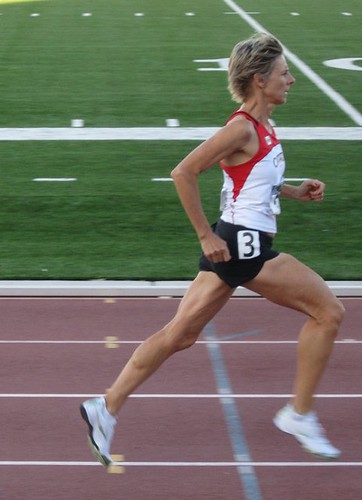 In Texas (a “direct access state” according to the American Physical Therapy Association), we are nine months away from another legislative session in which we will attempt, yet again, to attain consumer direct access to physical therapy.
In Texas (a “direct access state” according to the American Physical Therapy Association), we are nine months away from another legislative session in which we will attempt, yet again, to attain consumer direct access to physical therapy.
All has been quiet here in Texas since April 2011 when we finally had a bill reach committee, only to have it die in committee. March 2012 is now upon us, and I am sure that the overtures will begin again in earnest soon enough. I can hear it now: “We need to build relationships with our legislators” will be the battle cry, followed shortly thereafter by “we need to raise money for lobbying”.
Reality check: we don’t have the people. We don’t have the money. We don’t have the legislators. And as they say, if you do what you’ve done, you’ll get what you’ve got.
The profession needs a significant game change – a pitching change, if you will.
 I am sure you’ve experienced it. You are relaxing comfortably, fall asleep, then suddenly arrive at a terrifying dream in which you experience feelings of extreme anxiety. Then, you wake back up and realize it was all just a dream. It was nothing more than a nightmare.
I am sure you’ve experienced it. You are relaxing comfortably, fall asleep, then suddenly arrive at a terrifying dream in which you experience feelings of extreme anxiety. Then, you wake back up and realize it was all just a dream. It was nothing more than a nightmare.
I see the same thing in health care, and I keep hoping that I will wake up and realize it was all just a dream. But it’s not. As a PT in the sports world for 24 years, i have seen my fair share of nightmares in health care. The most obvious and prevalent examples of these nightmares are the cases that are grossly over-treated or under-treated in the face of good scientific evidence and clinical reasoning – or lack thereof.
Sadly, these nightmares are recurrent in the world of sports medicine and orthopedics.
 This is the 11th in a series of RunSmart videos. The series is on-going, with a new video released on a biweekly basis. These videos complement the material presented in the book “RunSmart: A Comprehensive Approach To Injury-Free Running”. The full series of videos can be found here. A compilation of the first 10 videos will be available on Vimeo as well.
This is the 11th in a series of RunSmart videos. The series is on-going, with a new video released on a biweekly basis. These videos complement the material presented in the book “RunSmart: A Comprehensive Approach To Injury-Free Running”. The full series of videos can be found here. A compilation of the first 10 videos will be available on Vimeo as well.
For those of you that are interested in a more interactive learning environment, consider attending a Level One (half day), Level Two (one day), or Level Three (two day) RunSmart program. The Level One program is 4 hours and focuses on basic training principles and running mechanics. The Level Two program is 8.5 hours and focuses on injury prevention and performance optimization. The Level Three program is a two day, 15 hour program that includes a comprehensive approach to running injuries. The next Level One program will be offered in Austin on March 24, 2012. The next Level Three program will be offered in Reno, Nevada on May 5 – 6, 2012 at the University of Nevada.
In this video, I discuss verbal and mental cues. Many athletes try to micromanage their running mechanics - “place the foot here, don’t toe out, tilt the pelvis slightly” and similar biomechanical specifics. But sometimes a simple verbal or mental cue will suffice.
 One of the primary bastions of endurance sports training concerns “logging in the miles”. Many call this LSD training – LSD standing for Long Slow Distance.
One of the primary bastions of endurance sports training concerns “logging in the miles”. Many call this LSD training – LSD standing for Long Slow Distance.
I always like to keep one phrase firmly in the forefront of my mind - “long slow distance makes for long slow [insert here: runners, cyclists, etc]”. The human body adapts to the training demands imposed on it. With that said, if you are training at a slow pace, then it stands to reason that you will get really good at running at a slow pace. I have yet to meet an athlete that was training to get slower.
You have probably encountered this thinking before – put in a bunch of miles at a slower pace in order to “build your aerobic energy system”. This will then lead to gains in endurance sport performance – or so the theory goes.
 The world of orthopedics has grown significantly over the past three decades. There has been a huge growth in technology, and this has had a huge impact on surgical and diagnostic procedures.
The world of orthopedics has grown significantly over the past three decades. There has been a huge growth in technology, and this has had a huge impact on surgical and diagnostic procedures.
But how much impact has this had on true patient-focused care? The majority of patients in the orthopedic realm are non-surgical and require effective, conservative care. Just take a look at those with back pain as a prime example of the challenges facing orthopedic clinical practice these days. More and more clinical guidelines are indicating support for fewer and fewer assessment methods and treatment interventions. Costs continue to rise. Patients are unable to access their provider of choice given the antiquated gatekeeper model. The health care system as we know it is failing the patient, in terms of access to care, fiscal responsibility and outcome. Such is the world of back pain – as but one orthopedic example.
Mechanical Diagnosis And Therapy, or MDT, will redefine how orthopedics is practiced – by providing a framework for problem solving, diagnosis, and patient-focused care.
 There is nothing like a humanitarian effort to put pride in ones’ heart. Helping your fellow man – or woman – is something that I think provides value in our lives.
There is nothing like a humanitarian effort to put pride in ones’ heart. Helping your fellow man – or woman – is something that I think provides value in our lives.
We see the signs of these efforts in health care on a regular basis now. Just a few days ago, I was witness to some placards on 6th Street, asking people to make donations for health care for a baby in China. Another example is “Floating Doctors” - a medical group that provides free health care for people in remote regions of Haiti, Honduras, and Panama. These are all admirable, socially-conscious efforts.
My question is this: how many of these same people are staunchly opposed to universal health care in their own backyard?
 This is the 10th in a series of RunSmart videos. The series is on-going, with a new video released on a biweekly basis. These videos complement the material presented in the book “RunSmart: A Comprehensive Approach To Injury-Free Running”. The full series of videos can be found here. A compilation of the first 10 videos will be available on Vimeo as well.
This is the 10th in a series of RunSmart videos. The series is on-going, with a new video released on a biweekly basis. These videos complement the material presented in the book “RunSmart: A Comprehensive Approach To Injury-Free Running”. The full series of videos can be found here. A compilation of the first 10 videos will be available on Vimeo as well.
For those of you that are interested in a more interactive learning environment, consider attending a Level One (half day), Level Two (one day), or Level Three (two day) RunSmart program. The Level One program is 4 hours and focuses on basic training principles and running mechanics. The Level Two program is 8.5 hours and focuses on injury prevention and performance optimization. The Level Three program is a two day, 15 hour program that includes a comprehensive approach to running injuries. The next Level One program will be offered in Austin on March 24, 2012. The next Level Three program will be offered in Reno, Nevada on May 5 – 6, 2012 at the University of Nevada.
In this video, I discuss “foot strike”. There is much discussion and debate in the running community regarding foot strike. But does this debate address the important issues that truly affect running mechanics and performance? Foot position relative to center of mass may in fact be more important than the actual strike pattern of the foot.
 "Running Injuries: Etiology And Recovery- Based Treatment" (co-author Bridget Clark, PT) appears in the third edition and fourth editions of "Clinical Orthopaedic Rehabilitation: A Team Approach" by Charles Giangarra, MD and Robert C. Manske, PT.
"Running Injuries: Etiology And Recovery- Based Treatment" (co-author Bridget Clark, PT) appears in the third edition and fourth editions of "Clinical Orthopaedic Rehabilitation: A Team Approach" by Charles Giangarra, MD and Robert C. Manske, PT.
 Allan Besselink, PT, DPT, Ph.D., Dip.MDT has a unique voice in the world of sports, education, and health care. Read more about Allan here.
Allan Besselink, PT, DPT, Ph.D., Dip.MDT has a unique voice in the world of sports, education, and health care. Read more about Allan here.
 Top 5 finalist in three categories: "Best Overall Blog", "Best PT Blog" and "Best Advocacy Blog".
Top 5 finalist in three categories: "Best Overall Blog", "Best PT Blog" and "Best Advocacy Blog".